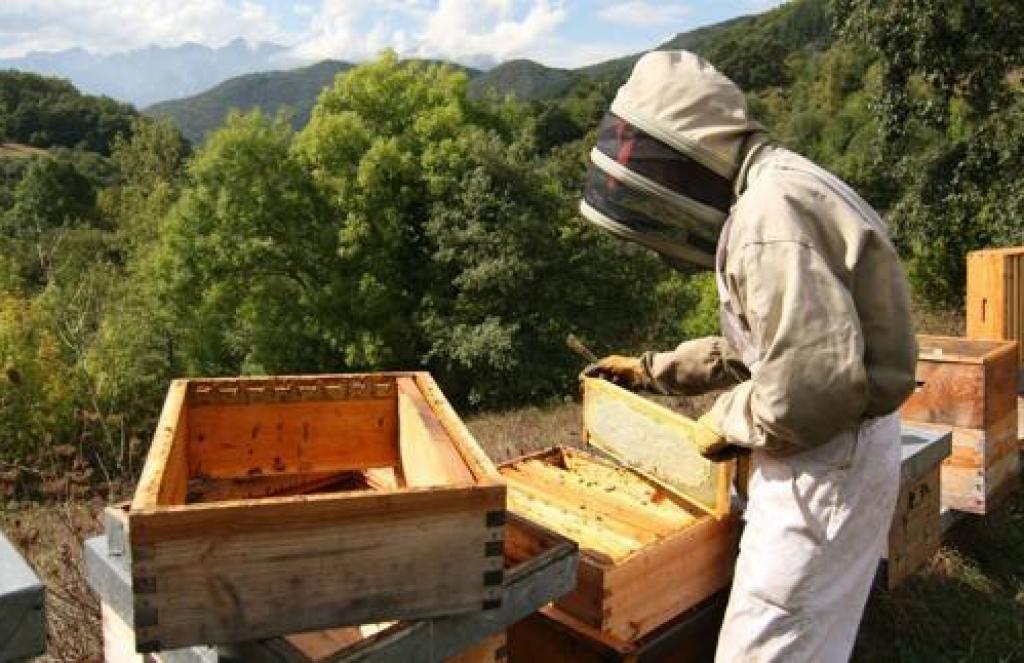Thessaloniki gets ready for its metro launch in November
The underground rapid transit lines have been under construction for almost two decades due to various project delays
 TheMayor.EU logo
TheMayor.EU logo 
Cantabrian beekeeper, Source: Un apicultor en Cantabria, Espana by Davarona, on Wikimedia Commons (CC BY-SA 4.0)
This comes from a report by the EC Joint Research Centre
Yesterday, the Cantabrian Ministry of Rural Development announced that it has participated in a European research project carried out by the European Commission’s Joint Research Centre (JRC) that seeks to identify whether honeys can be reliably classified according to their botanical and mineral compositions and thus minimize the risk of fraudulent labeling.
The Ministry had sent 30 samples of different honeys produced in the Liébana region (in the west of Cantabria) all of which belonged to the ‘Miel de Liébana’ Protected Designation of Origin. The results showed that they could reliably be grouped together based on their unique profile, while also retaining distinctive features that differentiated the brand of each beekeeper.
The European study, which used the energy dispersion X-ray fluorescence technique to analyze the composition of each honey sample, found out that the neighbouring regions of Liébana and El Bierzo produced distinct apicultural products due to the presence of manganese oxide in their soils – a mineral that is otherwise quite rare in the rest of Spain.
The conclusions of the study, which have been published in a prestigious scientific journal, according to the Cantabrian Government, attested that the Liébana honeys are distinguished by their greater homogeneity thanks to the above factor. However, honey products can also be easily differentiated among the various producers, as well.
"We produce little, but it is excellent and a great product," said Guillermo Blanco, the regional Agricultural Minister. He also praised "the dedication and professionalism" of producers in the region in their work of transforming the raw materials into a delicious treat.
"They all have the privilege of doing their work in a land with natural resources of high environmental value, which have a very favorable impact on the final result of the food produced".

The underground rapid transit lines have been under construction for almost two decades due to various project delays

Now you can get your wine in Talence by paying directly in Bitcoin

That’s because the state has to spend money on updating the railway infrastructure rather than subsidizing the cost of the popular pass

Rethinking renewable energy sources for the urban landscape

The examples, compiled by Beyond Fossil Fuels, can inform and inspire communities and entrepreneurs that still feel trepidation at the prospect of energy transition

Now you can get your wine in Talence by paying directly in Bitcoin

The 10th European Conference on Sustainable Cities and Towns (ESCT) sets the stage for stronger cooperation between the EU, national and local level to fast track Europe's transition to climate neutrality.

At least, that’s the promise made by the mayor of Paris, Anne Hidalgo

The underground rapid transit lines have been under construction for almost two decades due to various project delays

At least, that’s the promise made by the mayor of Paris, Anne Hidalgo

Hostal de Pinós is located in the geographical centre of the autonomous region

Despite its church-y name, the district has long been known as the hangout spot for the artsy crowds

Urban dwellers across the EU are having a say in making their surroundings friendlier to people and the environment.

Forests in the EU can help green the European construction industry and bolster a continent-wide push for architectural improvements.

Apply by 10 November and do your part for the transformation of European public spaces

An interview with the Mayor of a Polish city that seeks to reinvent itself

An interview with the newly elected ICLEI President and Mayor of Malmö

A conversation with the Mayor of Lisbon about the spirit and dimensions of innovation present in the Portuguese capital














